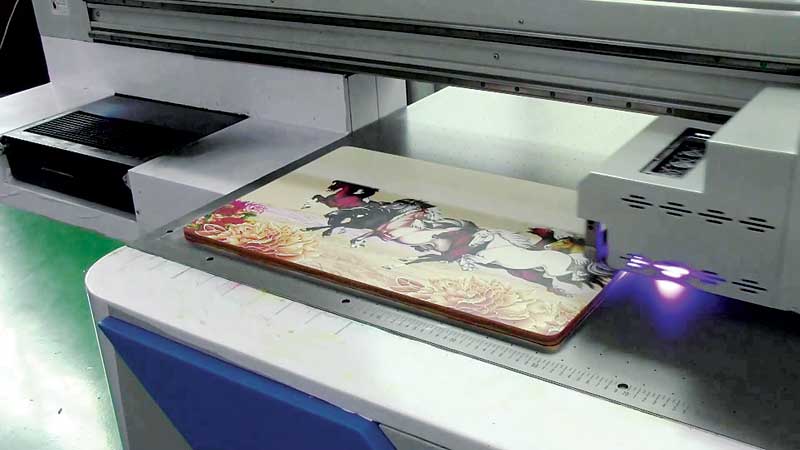
A flatbed UV-curing printer can output graphics directly onto non-traditional substrates like wood.
File photo
Reaching clients
Companies that offer wide-format printing services most commonly produce banners, posters, POP displays and signs. All of these applications continue to represent major opportunities in the aforementioned industries, as well as others.
Fabric flags, banners, wind feathers and tension graphic displays, for example, can all be used to build out a themed area in a department store—and as an added benefit, they are largely reusable. Rigid boards, too, can be used for semi-permanent display structures, such as visual separators for the ice cream, beverage and fast-food sections of a gas station’s limited retail space, with numerous branding opportunities that can be exploited.
Current market trends are dictating shorter runs, more customized versioning and faster turnarounds. These are all characteristics that make digital wide-format printing an attractive method of production. The key for success is for signmakers to understand their target markets, including their customers’ buying habits and priorities.
There is no question opportunities abound, including areas of untapped potential for sign shops to explore to increase their revenue and market share. Technology—from printers to inks to substrates to finishing equipment—continues to improve even while prices drop. This is particularly compelling for smaller shops that might not have been able to offer wide-format printing or finishing services in the past.
While the potential for growth exists across a vast range of vertical markets, another key factor is education. As the number of inks, substrates and machines continues to grow in a highly competitive industry, the learning curve has become steeper. Dynamic knowledge is crucial to maintaining sales and retaining business. The bar is being raised ever higher in terms of clients’ expected print quality, for example, which calls for practical colour management skills.
Indeed, even as it grows, the wide-format printing industry is fraught with challenges. One of the most common issues is space. If sign shops are to increase their print volumes, after all, they typically require larger-format printers, but many face space limitations in their facilities. With these constraints in mind, many may need to make compromises in terms of speed or quality, but another answer is to specialize in a niche market until there is a chance to expand an existing facility or move to a bigger one.
For all of these reasons, it is important for PSPs to evolve alongside all of the broader changes that are shaping the way their industry is growing.
Steve Urmano is director of InfoTrends’ wide-format printing consulting service and develops annual global market forecasts for hardware and supplies used in the wide-format graphics market. This article is based on a white paper he prepared for the International Sign Association (ISA). For more information, contact him via e-mail at steve.urmano@infotrends.com or visit www.signs.org/research to read the complete report.





